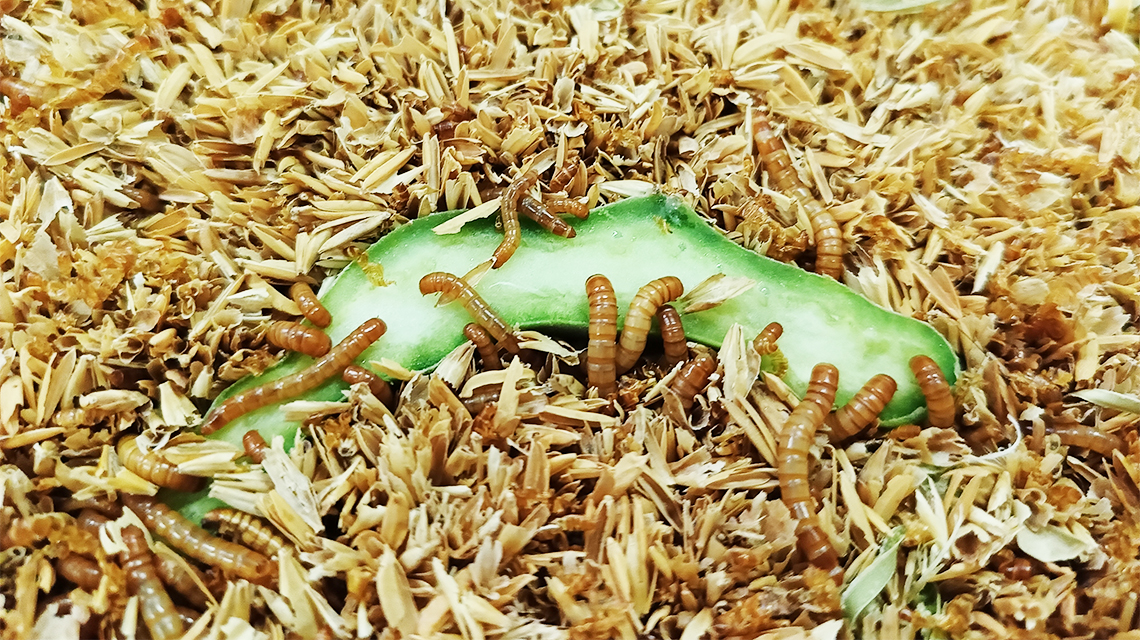Italian National Agency for New Technologies, Energy and Sustainable Economic Development

Environment: From ENEA sustainable solutions for edible insect farming
An ENEA study has shown that it is possible to improve the environmental sustainability of insect farming to make products to be employed in a variety of sectors, including animal (feed) and human (food) nutrition. The outcomes, published in the international journal Agriculture, are based on a change in dietary supplementation of the first insect approved by the UE[1] for human consumption, the Tenebrio molitor[2],
better known as the “meal moth”.
"In general, insect farming requires water compared to traditional farming and produces lower greenhouse emissions for the same amount of protein. But the results obtained proved to be even more interesting in reducing electricity consumption thanks to the use of prickly pear blades (cladodes) instead of carrots, potatoes and apples as a new water source for the flour moth," explained Simona Errico at the ENEA Circular Regenerative Bioeconomy Laboratory of the Trisaia Research Center (Matera).
“The new plant matrix, in fact, perishes more slowly, does not mold and, above all, can be stored for long periods at room temperature, thus cutting down the energy consumption of a refrigerator, which is necessary to store carrots, potatoes and apples,” Errico said. But that’s not all: in fact, prickly pear blades -a by-product not intended for human consumption- are widely spread in the Mediterranean area, and the larvae of Tenebrio molitor seem to prefer them to other water sources already in use.
Since the European Commission has authorised four types of insects for human consumption in 2021[3], the spotlight has been turned on the breeding conditions and potential of other species still awaiting approval.
"At the Trisaia Research Center we have been breeding Tenebrio molitor for quite some time, which is a very interesting study model for increasingly innovative and sustainable productions. In our case we try to use everything that can be obtained from its breeding, such as protein powders, frass (the droppings produced by the insects), dried larvae and exuviae (the remains of the exoskeleton) Errico pointed out.
Thanks to her expertise in this field, the ENEA researcher also signed the editorial of a special issue of the journal Agriculture, titled “Sustainability and Perspectives of Edible Insect Rearing and Utilization of Their Products and Byproducts,” which features eight scientific contributions from different countries around the world suggesting new perspectives on the use of edible insect breeding products and byproducts such as: Bombyx mori, a lepidopteran also called “mulberry bumblebee,” which has not been proposed for human consumption in Europe but is normally used for this purpose in Asia; Hermetia illucens, also called “soldier fly” because the adult head resembles a soldier's helmet, which has been proposed for human consumption in Europe but not approved by the EU and Tenebrio molitor.
"The interest raised by the special issue of the magazine highlights the importance and relevance of the topic, providing insights for new research and concrete answers to the challenges posed by the manufacturing world and consumers. The goal? Making insect farming not only a sustainable solution, but also a possibility to process their by-products into animal feed, as highly demanded by farmers" concluded Simona Errico of ENEA.
Photos and Videos
Notes
[1] Implementing Regulation (EU) 2021/882 authorizing the placing on the market of dried Tenebrio molitor larvae as a novel food under Regulation (EU) 2015/2283 of the European Parliament and of the Council.
[2] On average, dried Tenebrio molitor larvae contain about 45-50% protein of the total dry weight. However, the protein content may vary depending on the rearing and preparation method. Rich in healthy fats (about 30 percent), it provides a good amount of vitamins and minerals such as iron and zinc. In Italy, as in other member countries, it can be marketed in different forms: protein powders, snacks (bars, cookies, crackers), and ingredients for pasta or baked goods. In food preparations, by law, Tenebrio molitor powder cannot exceed 10 percent of the weight of the product. However, human consumption is still niche, mainly promoted by innovative companies and appreciated by those seeking sustainable foods with high nutritional value. On the animal consumption front, Tenebrio molitor is most commonly used as animal feed, especially fish (aquaculture), birds, reptiles, monogastric terrestrial animals (e.g., pigs), and pets like dogs and cats (in premium feed).
[3] In order of approval: Tenebrio molitor, Acheta domesticus, Locusta migratoria and Alphitobius diaperinus
